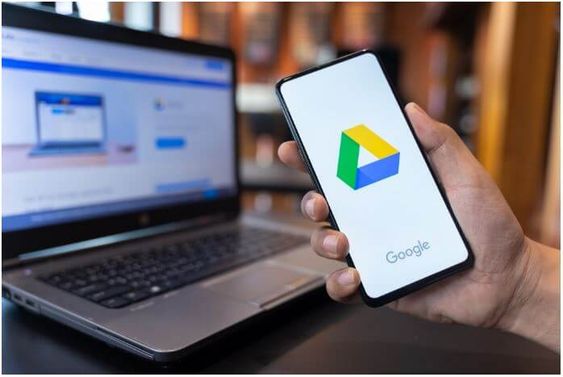What is SEM?
Defining precisely what SEM, or search marketing, consists of generates some discussion because there are differences between the ‘real’ meaning of the concept and the way most people use it.
SEM is the set of tools, techniques and strategies that help us optimise the visibility in search engines of websites and web pages. In other words, we want to appear more often and be positioned higher in the search results of Google and other similar sites. In particular, when a user searches for keywords related to our brand.
Usually, Google search pages, and other similar sites, show two types of results:
- Organic results (usually shown in the centre of the page). The search engine uses an algorithm that tells it which sites respond best to a given search in order to rank content. For example, Google’s algorithm works based on relevance (website content) and authority (links from other pages). The set of techniques and tools used to position organic listings is known as SEO (Search Engine Optimization).
- Paid Results. These results are displayed at the top or the bottom of the page. These are often displayed at the top and even at the bottom’s page. Unlike organic listings, the advertiser pays an amount for each click it gets (PPC – Pay Per Click). To obtain bought traffic, we need to turn to search engine advertising solutions, such as Google Ads. This system is also known as PPC (pay per click) or CPC (cost per click).
Search Engine Marketing (SEM) encompasses SEO and SEA (Search Engine Advertising) techniques. The controversy lies, more recently, in the fact that most marketers use SEM to refer exclusively to paid search engine advertising, i.e. PPC or SEA. Why? Because of the size and complexity that SEO has gained in recent years with its techniques, strategies and practices. Some people consider that it has eventually become a separate branch from SEM.
SEM (Search Engine Marketing), SEO (Search Engine Optimization) and SEA (Search Engine Advertising). What are the differences?
SEO (Search Engine Optimization)
As mentioned above, SEO has been used to refer to organic listings. It is an acceptable practice that search engines actively encourage. In the search world, SEO equals PR in the “real” world. Good SEO can not guarantee good search engine “coverage” any more than good PR can ensure that an article will be published in a good newspaper. However, it can increase the chances of that happening.

SEA (Search Engine Advertising)
That is a technique of getting traffic to a website through paid advertising, such as Google Ads or Bing Ads. It works on a PPC (Pay Per Click) system where the advertiser only pays when someone clicks on their ad.
SEM (Search Engine Marketing)
SEM is a powerful advertising channel. It is a technique of diverting more traffic to the website by increasing its ranking on popular search engines like Google, Bing, Yahoo, etc. SEM, also known as Search Marketing, can be carried out in two ways; getting traffic to the website with the help of SEO and getting traffic with the help of SEA.
Many marketers use the term Paid Search instead of SEA, or worse, they use the term SEM when they mean SEA. It seems confusing enough, but the bottom line you need to know it’s that SEM includes SEO and SEA. Both are important in your marketing strategy.
What are the benefits of SEM?
SEM is an online advertising technique that can help you build a strong presence in Google search, allowing you to achieve your business goals.
1. Be Present at the Right Time
No doubt, one of the main advantages of conducting SEM campaigns, organic or paid, is to be present exactly when the customer is searching for your product/service, i.e., appearing the moment the consumer is available and predisposed to engage in your search. That is Inbound Marketing. With no interruptions, the customer will come to you at their best convenience.
Take this example: A plumber can advertise several times on TV, but by the time people see the ad, they do not need the service. At that moment, it’s not relevant to them. So, they may do selective listening and not even listen to the ad or at least not retain the information. Now, if you come home one day and notice that the kitchen sink is clogged and not draining… what will you do? Google it. You will search for a plumber in your area who is available at that time. The ones at the top or middle of the page (paid/organic) will be the first ones you call. You won’t be searching on the 2nd, 3rd, and 4th pages anymore… That’s SEM working, and it has incredible power!
Coming up featured at the right moment of consumer need and at the right time. Powerful, right?
2. Total Autonomy in your Campaigns
To advertise in the traditional media (TV, radio, outdoor…), you have to buy space through media agencies (another intermediary that charges a fee). That involves negotiating prices and space and formalised contracts. Undoubtedly a significant investment in financial resources and time spent.
With SEM, you can do everything in an autonomous and agile way. No negotiations, no contracts, no middlemen. You can work overtime on SEO and in SEA or PPC (Pay per Click) for faster results.
If your product goes out of stock, you can stop all your campaigns and even communicate at the time of consumer search that the item “is temporarily out of stock, but will be back soon”. You can even retarget those same consumers later on when your product is available again. In SEA, you can start and pause campaigns whenever you want, and you can quickly and cheaply adapt the message to the situation. It is unthinkable to change the message of your TV ad every week according to the specific audience of the moment.
3. Shorter Budget That Does More: Less is More
Small and medium companies no longer advertise their brands simply because the investment in traditional media is so high. From the creative agency, production of advertising spots, media agency, final arts, photographs, etc., all of this generates high costs for those who advertise, becoming unaffordable for the vast majority.
That is a problem even for large companies that invest in this type of advertising because they can only do it once or twice a year and can not have a continuous brand presence over the year. For those, who have worked in marketing for large companies, how often have they had to justify the % of the budget invested in production vs. % media space? The effort to fit everything into the budget was overwhelming. And how to prolong the brand’s presence with the consumer throughout the year?
And for what? To be on air 1 or 2 times a year (generally short 4 to 6 weeks) with an irrelevant message (one size fits all) for a vast audience that is not predisposed to hear that message at that moment of interruption.
In the internet and SEM era, all this changed, although many major companies haven’t woken up yet. Now, we have complete control over how much we want to invest. Through ad platforms, we can choose how much we are willing to spend on a click that leads to your website or even convert a customer to your company through a purchase.
4. Traffic Selected for a Purpose
One of the most challenging aspects of the digital world and its campaigns is the generation of non-relevant traffic to the site. SEM campaigns provide the opportunity to advertise only to people who are searching for specific things directly related to your brand and the issue you will solve for that user. When that query (prospect’s search) matches the keyword (keyword selected by the advertiser) you’ve bought or used in your SEO strategy, magic happens, and your company appears right in front of your prospect, ready to solve their issue.
By focusing on keywords, we will reach the target audience actively interested in us. In SEA specifically, we can filter these audiences by other factors such as location, language or behaviour.
PPC search ads allow you to target specific demographics, as well as potential consumers at any stage of the sales funnel, meaning that the traffic you’ll receive from paid ads is more likely to be qualified than traffic generated through other means.
5. Measurable and in Real Time
Another great advantage of working with SEM is the ability to measure and track all consumer behaviour. In traditional media, who can say that that specific TV ad generated x number of sales? Nobody.
In SEM, we know precisely the ads (paid or unpaid) that led to a conversion in real time.
Tools like Google Ads provide highly detailed reports on the evolution of your campaigns, so you can know what’s happening with your ads. In addition, you can take advantage of the integration with Analytics to have everything perfectly under control.
Conclusion:
SEM means getting your content highly visible on Google or other search engines. It has good potential to deliver instant results, conversions and soon more cash coming into your business.
SEM is most powerful when used to its full potential, i.e. a combination of SEO and SEA (PPC).
An SEO strategy should be continuous and always running in the background. Never stop. You may want to invest more or less time in it depending on your resources, but keep executing: It always pays off in the end.
SEA strategy should be more on-need. You can even execute it constantly to improve your results, but ultimately it is a more “on demand” strategy to help you boost your results when needed.
We hope we have helped you. Of course, there is much more behind each of these strategies. You can count on us to help! At Link37, we work all of these strategies to leverage your business, freeing up your time to focus on what you love most.
How is your SEM strategy? Share with us, and we’ll help you!
LAST UPDATE ON APRIL 2024



